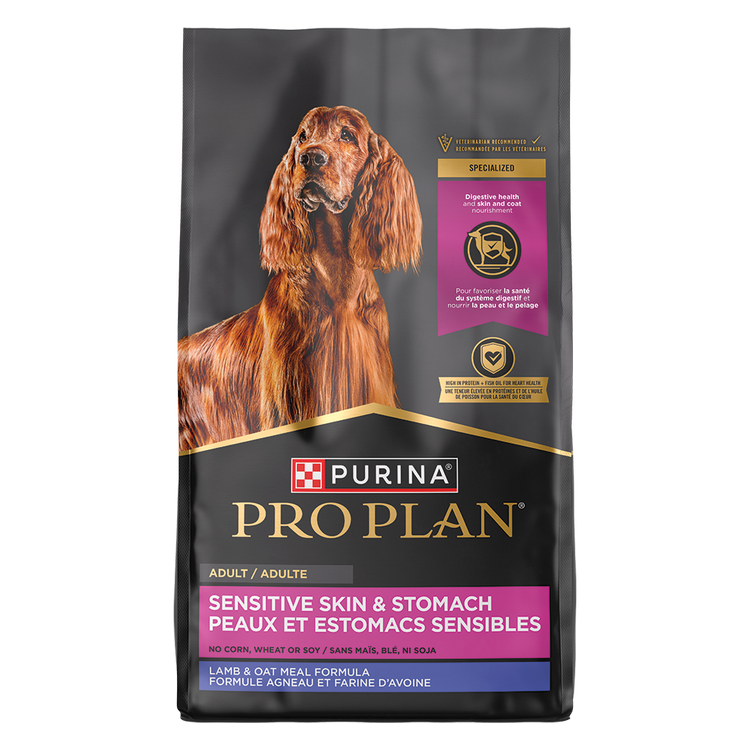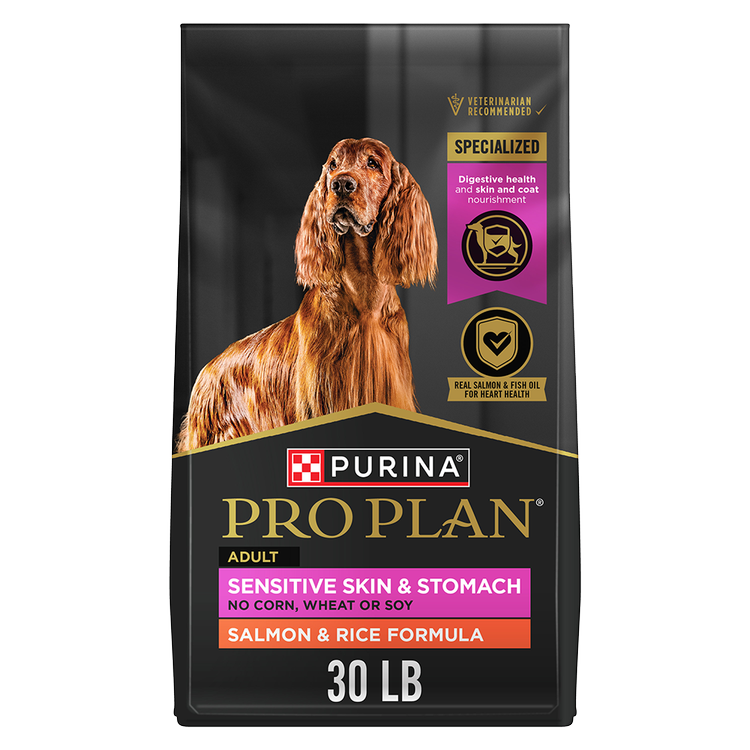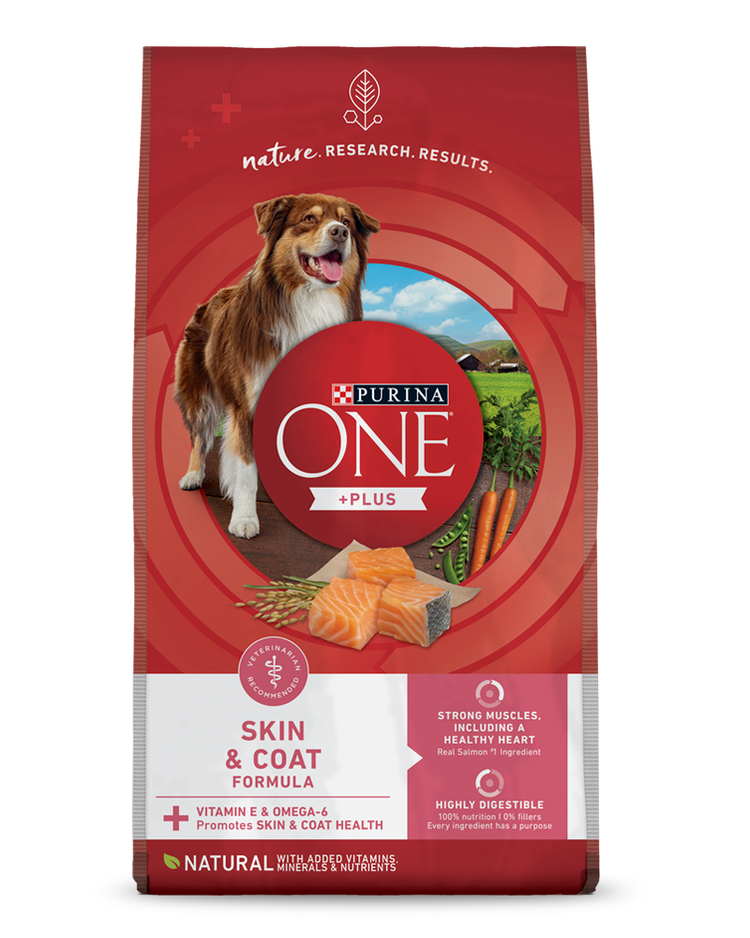Common Dog Skin Conditions & Problems


Dog skin conditions are fairly common. Whether your pet experiences seasonal dryness or must deal with intense itching and inflammation from allergies, skin problems affect many canines and can range in severity.
Here’s an overview of common canine skin conditions, as well as tips for identifying and maintaining healthy skin in your pet.
Signs of Skin Conditions in Dogs
The causes of skin diseases and conditions are unique, but symptoms may overlap. For example, alopecia is associated with mange but may also occur from excessive scratching triggered by a flea bite.
Here are some common signs of skin conditions:
Itching
All dogs have itchy skin from time to time. Occasional itching isn’t cause for concern. If it becomes excessive, however, it’s probably a sign of an underlying condition.
Dog skin becomes itchy when it’s dry or when an allergen has entered your pet’s bloodstream.
Itchy skin is not only a nuisance to your dog, it can lead to health problems, as well. If they scratch enough, they can irritate the skin further, creating an infection.
Rash
A dog rash can be broadly defined as irritated skin. Other signs may include redness, bumps, sores, hair loss and dandruff. In some cases, it may be related to crusty dog skin conditions, as well.
Among dog skin problems, rashes are a common symptom. They may indicate everything from allergies to a parasitic infection, and often appear around your pet’s belly, underarms and groin.
Dandruff
Dog dandruff is usually related to flaky dog skin conditions as it’s characterized by white flakes on your pet’s epidermis. In some cases, though, it can lead to an excessively oily coat. Dandruff can result from a poor diet, under- or over-grooming, and a dry environment, among other things.
Hot Spots
Hot spots are warm, swollen patches of skin. They often exude pus and have a foul smell. Your dog may try to lick and chew the irritated skin, which unfortunately makes the condition worse.
Hot spots tend to appear on breeds with heavy coats and are painful. Medicated shampoos, steroid cream and antibiotics are usually prescribed to treat them, as well as any secondary infections.
Alopecia
Alopecia is another term for hair loss. Dogs with alopecia may have a serious skin condition such as ringworm or intense allergies. It usually occurs when the body damages its own hair follicles.
Common Skin Conditions in Dogs
Not all skin conditions are harmful to canines. There are some dog skin diseases, however, that require attention from your veterinarian.
Here are some of the most common conditions that your pet may experience:
Allergies
Some signs of dog skin allergies include scratching, chewing, rash and crusted skin. They can be triggered by flea bites, allergens in the environment, and – while less common – food.
Fortunately, there are a range of treatments available, depending on the severity of symptoms.
Skin Tags
Typically, skin tags on dogs are harmless. They’re abnormal but benign growths on your pet’s body that can range in appearance, although many have a stalk. Middle-aged and senior dogs get them more often than younger canines.
Acne
Just like humans, dog acne can affect adolescent canines. If you notice pimple-like bumps around the muzzle, lips and chin of your pet, these are likely due to clogged hair follicles, or another related reason.
Mange
Mange is a skin disease caused by parasitic mites. Dogs who have mange can experience intense itchiness, inflammation and crusted skin – just to name a few symptoms. Sarcoptic mange is contagious but treatment is available.
Ringworm
Ringworm, a fungal dog skin condition, is a highly contagious infection. Dandruff, alopecia and red, crusted skin are common symptoms. Your veterinarian will likely prescribe medication to treat it.
Skin Cancer
Not all forms of skin cancer in dogs are harmful. While malignant tumors can develop, benign growths such as lipomas may also occur. Look for signs such as lesions, scabs and wart-like growths. Contact your veterinarian immediately if you think your pet has skin cancer.
What Does Healthy Dog Skin Look Like?
If you’re trying to identify dog skin conditions on your pet, here are some signs of a healthy skin and coat:
- Typically, dog skin is pink or black, although specific pigments may vary depending on breed.
- Skin should be smooth and free of lesions, crusting, scaling and inflammation.
- Healthy coats are often shiny without any bald patches or flaking.
- Skin and coat should be clean.
How to Keep Dog Skin Healthy
There’s no guarantee that your dog won’t develop skin problems, but you can reduce symptoms like itchiness by helping them maintain a healthy skin and coat.
These factors can promote skin health in your canine companion:
A Complete & Balanced Diet
Nutrition plays an important role in the health of your dog’s skin. Complete and balanced dog foods provide essential nutrients your pet needs. There are other formulas, however, tailored to dogs with sensitive skin. Skin and coat supplements are also available. If you’re wondering if you should feed your pet sensitive skin dog food, talk to your veterinarian.
Grooming
Brushing your dog keeps their coat free of loose and dead fur, and may help reduce inflammation. Bathing them with shampoos formulated to reduce dryness is also a good idea. Be careful not to overdo it, though. Bathing too often may actually dry out their skin.
Regular Evaluations at Home
Once per week (or more depending on your environment), check your dog for crusty dog skin conditions as well as any other unusual signs. Make sure to look at points where symptoms may not be easy to spot, such as their belly, underarms and ears.
Dog Skin Conditions – When to Contact Your Veterinarian
If an area of your dog’s skin recently changed in appearance and you’re not sure why, note the size and shape of the symptoms as well as any other unusual details.
The presence of other new symptoms such as crusts and severe rashes are signs you should contact your veterinarian.
Additionally, note your dog’s behavior. Excessive scratching, licking or biting are also reasons to talk to your veterinarian. Seemingly unrelated behavioral changes like lethargy or lack of appetite are cause for concern as well.
If, however, the skin condition looks mild and your pet seems undisturbed by it, you can keep an eye on it. If it doesn’t go away or gets worse, seek medical attention.
For many canines, skin conditions are a way of life. Fortunately, you can help reduce your pet’s discomfort by promoting healthy skin, checking for symptoms, and working with your veterinarian to provide treatment.
Have more questions about your dog’s health? Learn what our experts have to say in our collection of dog health articles.
Related articles

Reward Yourself with myPurina
Earn and redeem rewards for Purina products with the myPurina app.






